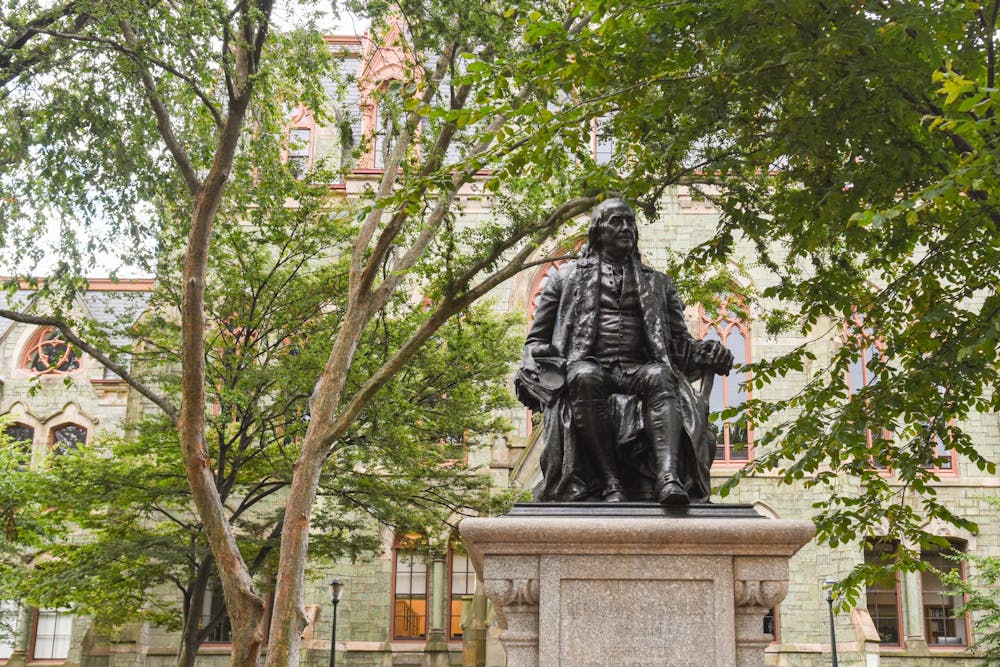
Penn’s four undergraduate schools cater curriculums to enhance student learning in all fields. These general requirements cover a wide range of academic disciplines from hard sciences and mathematics all the way to arts and humanities. While these four curriculums address the necessary elements for a well-rounded education, one major discrepancy remains: the lack of an environmental foundation.
The global environmental emergency remains one of the most pressing issues of this century. This generation is forced to grapple with various environmental poisons, such as rising carbon emissions and pollution of our air and water. Rising environmental leaders, such as Greta Thunberg, show how the current youth can take action against a deteriorating planet through a combination of activism and education. However, large gaps still exist in the knowledge of these environmental solutions in order to reverse the damaging effects of the environmental crisis. What can we do? Better our environmental education systems.
An environmental education is an all-encompassing term for various areas of environmental arenas. Agricultural life sciences, sustainable technologies, and green policymaking all contribute to this large umbrella term. An effective environmental education is one that explores one of these such categories and makes it applicable to the line of work a student is interested in. For example, engineering students could use a STEM-heavy environmental requirement that exposes them to developing green technologies. Nursing students would most likely prefer an environmental education that targets life sciences and human health.
Instilling an awareness of environmental issues early on can help individuals to think broadly about how various career pathways integrate with sustainability. Additionally, educational programs can provide the right tools for students to inculcate deeper understandings of the environmental crisis, and to critically examine these challenges. As a result, college educational curriculums need to include a comprehensive component of environmental education to effectively confront environmental issues.
Recently, the Wharton School’s Legal Studies Department launched the course LGST 299: "Climate and Environmental Leadership in Action." As one of the first 20 students to pilot the course, I was introduced to an interactive classroom setup with both indoor and outdoor components. Part of the course required each student to attend a camping venture in Harpers Ferry, W. Va., where we had to apply the skills we learned from class. As I had never been camping before, I was tasked with challenging chores such as setting up tents, monitoring the amount of waste produced, and navigating the terrain. During all of this, I was simultaneously relating various classroom lessons such as ecosystem services and leadership skills. This is environmental coursework as it should be: integrating environmental knowledge with real-world applicability, bridging the gap between experience and education.
Although there are a few other classes like this, most environmental programs at Penn remain rooted in student interest and are only offered as optional electives. Hence, many students remain unfamiliar with some of the groundbreaking courses in sustainability and eco-friendly technologies that Penn offers.
On the flip side, environmental science course prerequisites such as ENVS 100: "Introduction to Environmental Science" give a generic view of the topic as a whole that often leave students uninterested in how they can connect this course with their interests. Additionally, the SSAP (Student Sustainability Association at Penn) and its partner environmental clubs take on a traditional approach to environmentalism that focuses on Penn’s campus itself. Both courses and clubs need to exceed beyond the scope of Penn, and break into creating impact for all sorts of communities and places.
The University of Minnesota integrated a general education requirement that requires most students to take at least three credits in environmental-related classes in their undergraduate years. This requirement has gotten faculty from all different university departments to engage in environmental literacy. As a result, students are better able to connect their interests with environmental responsibility. This goes to show that the same can be done even at Penn. Penn can create targeted environmental course requirements for each undergraduate school to foster interest in decreasing our global environmental footprint.
SANGEET ANAND is a rising Wharton sophomore studying economics and concentrating in Business, Environment, Energy, and Sustainability from Potomac, MD. Her email address is sangeet@wharton.upenn.edu.
The Daily Pennsylvanian is an independent, student-run newspaper. Please consider making a donation to support the coverage that shapes the University. Your generosity ensures a future of strong journalism at Penn.
Donate




